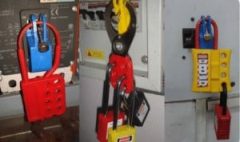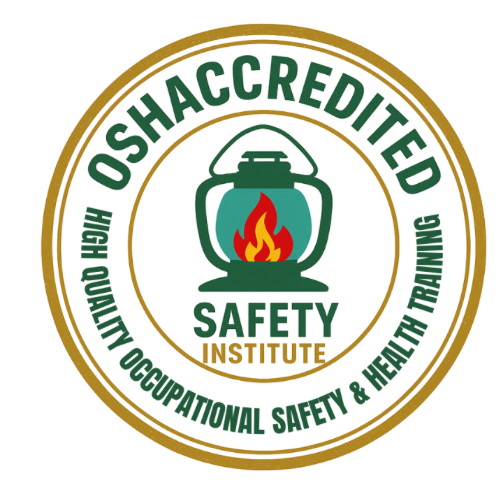Protecting Work Zones with Effective Flagger Online Safety Training
Protecting Work Zones with Effective Flagger Online Safety Training
Work zone safety is a critical concern in the construction industry. Every year, thousands of construction workers and motorists are injured or killed in roadway construction zones due to poor signaling, miscommunication, and a general lack of proper safety training. Flagger personnel serve as the first line of defense in these dangerous environments, guiding both vehicle traffic and onsite workers to prevent accidents. However, without proper flagger training, especially safety training that meets OSHA courses requirements and utilizes modern online safety and health training platforms the risks escalate rapidly.
This blog explores the role of effective flagger online safety training in protecting roadway construction zones. We’ll define what roadway construction entails, examine global and U.S. statistics on work zone injuries, and emphasize the advantages of using online safety training to deliver essential flagger education.
What Is Roadway Construction?
Roadway construction refers to the building, maintenance, repair, and upgrading of roads, highways, and bridges. This work involves heavy equipment, moving vehicles, and a constantly changing environment that puts workers and drivers at risk. Road construction zones often occupy narrow lanes, involve poor visibility, and occur during high-traffic periods—factors that all increase the potential for serious accidents.
A crucial part of maintaining order and safety in these chaotic environments is the use of trained flaggers. These individuals communicate with motorists, operate signage, and direct traffic safely around work zones. Without proper safety training, their role can become ineffective—or even dangerous.
Roadway Construction Injuries: A Global and U.S. Crisis
The statistics surrounding roadway construction injuries are alarming. In the United States:
- According to the Federal Highway Administration (FHWA), an average of 800 fatalities occur each year in roadway work zones.
- In 2022, over 42,000 injuries were reported in work zones across the U.S.
- Flaggers and other ground personnel represent a significant portion of these injuries due to proximity to moving vehicles.
Globally, the issue is equally concerning:
- The International Labor Organization (ILO) estimates that approximately 1.9 million workers are involved in road construction worldwide, many of them in developing countries with minimal training or safety protocols.
- A global study found that 1 in 3 construction zone deaths involved inadequate signaling or lack of safety training.
These numbers underline the urgent need for standardized, accessible flagger safety training, particularly training that complies with OSHA training requirements and is available via online safety training platforms.
Why Flagger Safety Training Is Essential
Flaggers are responsible for controlling traffic in and around construction zones. This includes:
- Guiding motorists safely through detours
- Protecting workers by keeping vehicles at a safe distance
- Communicating clearly using signs, hand signals, and radio communication
- Coordinating with equipment operators and site managers
Improper or inconsistent signaling can confuse drivers and create life-threatening situations. Therefore, it’s critical that flaggers receive comprehensive and consistent OSHA training.
The Role of OSHA in Flagger Training
The Occupational Safety and Health Administration (OSHA) requires that flaggers be properly trained in the use of signaling techniques, protective gear, and work zone protocols. OSHA guidelines stress the importance of hazard recognition, communication, and coordination with other personnel.
Taking OSHA courses specific to flagging helps workers:
- Understand how to set up safe traffic control zones
- Use STOP/SLOW paddles, hand signals, and communication devices effectively
- Respond to emergencies, such as accidents or aggressive drivers
- Recognize signs of fatigue and maintain alertness
Without meeting OSHA’s guidelines, companies expose themselves to liabilities and workers to deadly risks.
The Benefits of Online Safety and Health Training for Flaggers
Traditionally, flagger training was conducted in classrooms or onsite sessions. Today, online safety and health training provides a flexible and accessible alternative that meets OSHA standards and Manual on Uniform Traffic Control Devices (MUTCD). Here’s why online training is rapidly becoming the preferred method:
- Accessibility and Convenience
Online safety courses can be taken anytime and anywhere. Workers don’t have to travel to training centers or wait for scheduled classes. This is especially helpful for rural or remote job sites.
- Cost-Effective
Organizations save on instructor fees, printed materials, and logistical costs. Workers can train at their own pace without time off from work.
- Interactive and Engaging
Modern online safety training programs include videos, quizzes, simulations, and real-world scenarios that help flaggers retain information better.
- Meets Regulatory Standards
Many platforms now offer OSHA-certified online safety training, ensuring flaggers meet federal and state requirements.
- Tracking and Reporting
Safety training progress can be monitored and documented, which is crucial for compliance with audits and inspections.
Key Components of Effective Online Safety Flagger Training
An effective flagger online safety training program should include:
- Introduction to Work Zone Safety: General principles and goals
- Traffic Control Devices: How to use cones, signs, and barriers
- Communication Tools: Hand signals, STOP/SLOW paddles, radios
- Hazard Identification: Recognizing risks like blind spots, weather conditions, and aggressive drivers
- Emergency Procedures: Handling injuries, collisions, or vehicle intrusions
- Legal Responsibilities: Understanding OSHA regulations and employer expectations
Many OSHA training platforms now offer these modules in bilingual formats to support a diverse workforce.
Improving Work Zone Safety Through Safety Training
Beyond the flagger role, online safety and health training can improve the safety culture of the entire worksite. When everyone on a road crew from supervisors to laborers understands the risks and protocols, communication improves, and errors are reduced.
Some organizations even make OSHA courses part of their onboarding for all new hires, not just flaggers. Others use refresher courses annually or after an incident.
Additional Safety Measures to Pair with Safety Training
While online safety training is vital, flagger safety should also be supported by:
- High-visibility clothing that complies with ANSI/ISEA standards
- Advanced warning signs and lights to alert approaching drivers
- Automated Flagger Assistance Devices (AFADs) to reduce worker exposure to traffic
- Speed enforcement in work zones using radar or local law enforcement
Safety training alone won’t eliminate all risks, but it is the foundation of any effective safety plan.
Final Thoughts
Flaggers play a crucial role in keeping road construction zones safe for both workers and the public. But without adequate and OSHA-compliant training and MUTCD training, they’re unable to perform their jobs safely or effectively. Online safety and health training makes it easier than ever to provide high-quality education to these frontline workers, offering flexibility, affordability, and compliance.
Given the high number of injuries and fatalities in construction work zones, investing in OSHA courses and online safety training is not just a regulatory requirement, it’s a moral and operational imperative.











